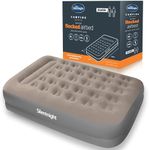Buying Guide for the Best Inflatable Double Beds
Choosing the right inflatable double bed can make a significant difference in your comfort and sleep quality, whether you're camping, hosting guests, or simply need a temporary sleeping solution. To make an informed decision, it's important to understand the key specifications and how they align with your needs. Here are the essential specs to consider when selecting an inflatable double bed.MaterialThe material of an inflatable double bed is crucial for durability and comfort. Common materials include PVC, vinyl, and flocked surfaces. PVC and vinyl are durable and resistant to punctures, making them ideal for outdoor use. Flocked surfaces provide a softer, more comfortable feel, similar to a traditional mattress. If you plan to use the bed frequently or in rugged conditions, opt for a durable material like PVC. For indoor use or guest beds, a flocked surface may be more comfortable.
Pump TypeInflatable beds can come with built-in pumps, external electric pumps, or manual pumps. Built-in pumps are convenient and easy to use, allowing for quick inflation and deflation. External electric pumps are also efficient but require a power source. Manual pumps are portable and don't need electricity, but they require more effort to inflate the bed. If convenience is a priority, a built-in pump is the best choice. For camping or situations where electricity is not available, a manual pump is more practical.
Size and DimensionsThe size and dimensions of the inflatable double bed determine how much space it will occupy and how comfortable it will be for two people. Standard double beds are typically around 54 inches wide and 75 inches long. Ensure the bed fits in the intended space and provides enough room for both sleepers. If you have limited space, consider a smaller size or a bed with adjustable firmness to maximize comfort without compromising on space.
Weight CapacityWeight capacity indicates how much weight the inflatable bed can support without deflating or getting damaged. Most double beds can support between 400 to 600 pounds. It's important to choose a bed with a weight capacity that exceeds the combined weight of the users to ensure durability and comfort. If you expect heavier use, opt for a bed with a higher weight capacity.
HeightThe height of an inflatable double bed affects ease of getting in and out of bed and overall comfort. Heights can range from low-profile beds (around 8-10 inches) to high-profile beds (up to 22 inches). Higher beds are easier to get in and out of and can feel more like a traditional mattress, while lower beds are more compact and easier to store. Consider your mobility and storage needs when choosing the height.
Air RetentionAir retention refers to how well the bed maintains its firmness over time. Beds with good air retention will stay inflated throughout the night without needing frequent re-inflation. Look for beds with reinforced seams and high-quality valves to ensure better air retention. If you need a bed for extended use or overnight guests, prioritize air retention to avoid discomfort from a deflated bed.
Ease of SetupEase of setup includes how quickly and easily the bed can be inflated and deflated. Beds with built-in pumps or easy-to-use valves simplify the process. Consider how often you'll be setting up and taking down the bed. If you need a bed for frequent use or travel, choose one with a straightforward setup process to save time and effort.
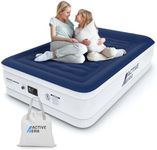
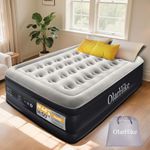

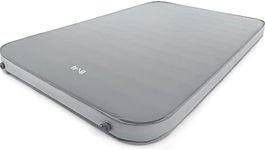
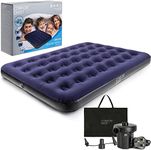

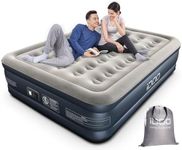
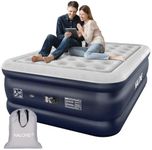
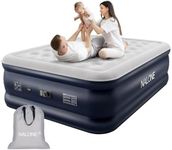
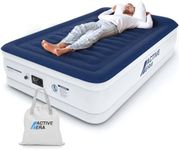
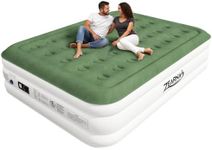

![Vango Odyssey Double Self Inflating Camping Mat [Amazon Exclusive], 7.5cm Deep Sleeping Mat for Camping, Use as an Extra Mattress or Camp Bed for Outdoor Adventures](https://images-proxy.bestreviews.guide/zq5CMhWrUmkL807T7ENPFE8UFLo=/0x150/https://m.media-amazon.com/images/I/314VrONNH7L._AC_CX679_.jpg)

